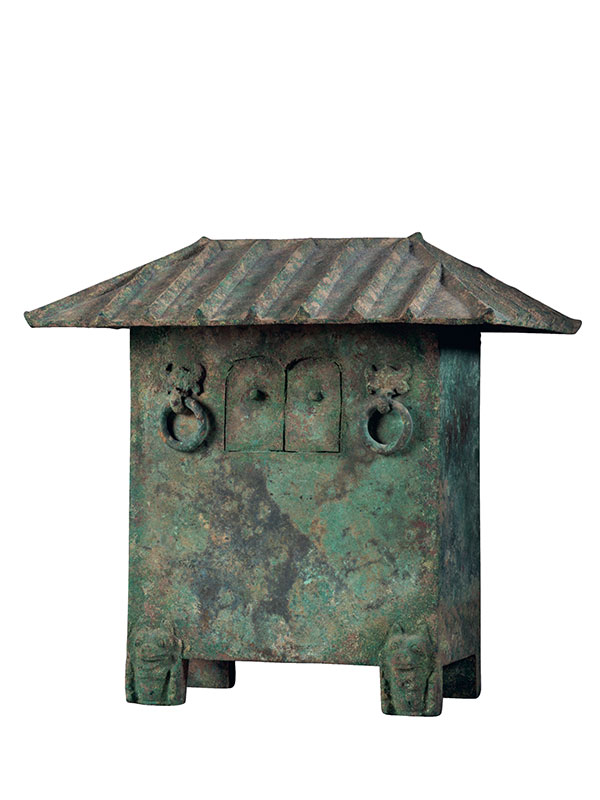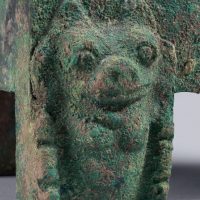Bronze model of a granary
China, Han dynasty, 206 BC – 220 AD
A bronze model of a granary, the rectangular building supported on the four corners by crouching bear-like creatures with well-defined facial features, their mouths half open showing the teeth, and with pointed ears. The structure is topped by a pitched roof, which has vertical beams of triangular section. The front of the granary has two small doors to the upper section, each of which has a semi-rounded top. To either side of these doors a small taotie mask with loose ring handle is applied. The bronze is mostly covered in a fine green patina.
The pitched roof with pronounced vertical beams on this charming bronze model of a granary represents a typical Han dynasty construction method. The fact that the building is raised on relatively tall legs supports the theory that it was intended for storage of grain. Although a large number of models of farm buildings, workshops and granaries are known to exist in pottery, renditions of these in bronze are exceedingly rare; one of the closest known comparable example perhaps being a bronze model of a house on stilts, with veranda, excavated from a tomb at Hepu, Guangxi, in southern China [1]. The bear.like animals that support the structure are often seen on Han dynasty ceramics and bronzes; a green-glazed pottery model of a house of very similar construction has similar legs [2]. A pottery tripod censer and its bronze counter piece, both in the Meiyintang collection, are both equipped with feet in the form of seated bears [3]. The addition of the small taotie mask handles would appear, however, to be unique to the bronze medium. Such handles are probably influenced by those seen on contemporary bronze ritual vessels.
Provenance:
Ben Janssens Oriental Art, October 2003
Private Collection, UK
- Pirazzoli-‘t Serstevens, M. The Han Civilization of China, Phaidon, Oxford, 1982, plate 54, pp. 86-7
- Zhongguo Taoci Quanji Vol. 3, page 194
- Krahl, R. Chinese Ceramics in the Meiyintang Collection Volume 1, London1994, fig. 15 and 16, p. 50


